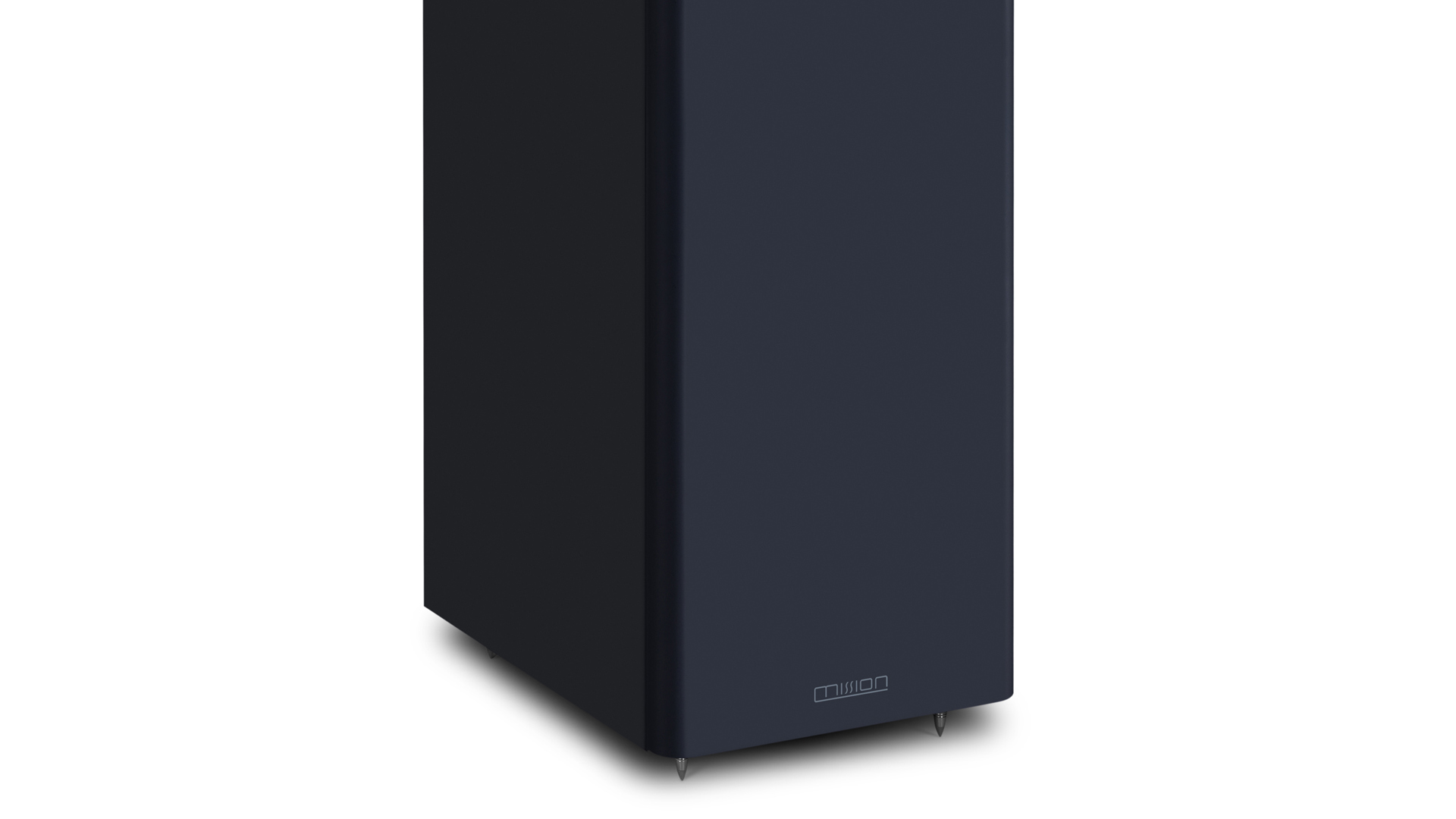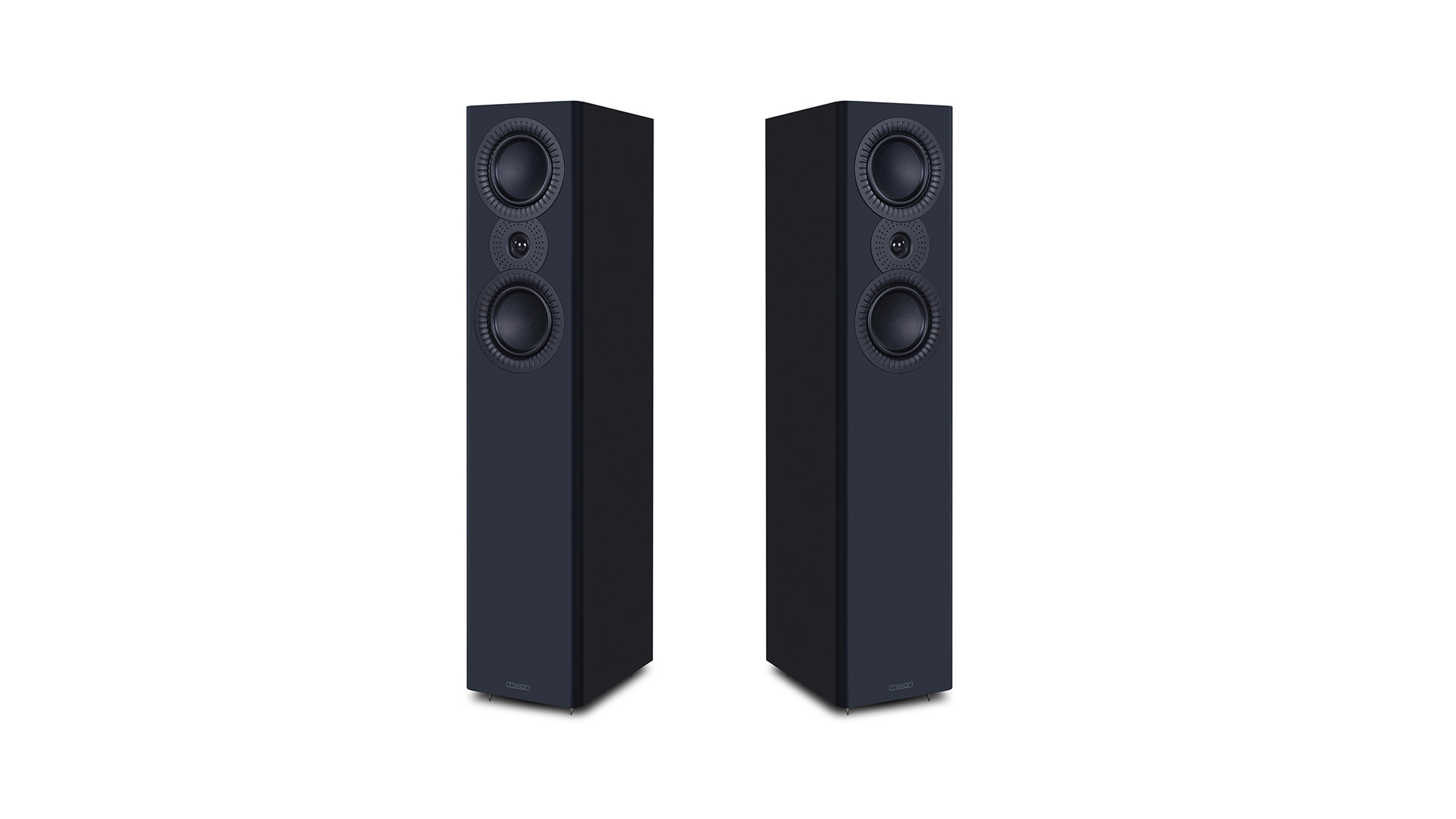What Hi-Fi? Verdict
Mission’s LX-4 MKII floorstanders are worth considering, but their sound lacks excitement
Pros
- +
Controlled presentation
- +
Sonic scale and authority
- +
Good build
Cons
- -
Sound lacks verve
- -
Needs care in positioning
Why you can trust What Hi-Fi?
Mission has quite some heritage when it comes to making affordable speakers, so when it releases a new entry-level series we are always keen to have a listen. The LX-4 MKII are the smallest floorstanders in its revised LX range and are pitched at an aggressive price considering the engineering and technology on offer.
Are these going to be the superstar budget floorstanders we’re hoping for?
Build

We can’t complain about build quality. These 90cm-tall towers are nicely made, given their price. They feel solid and when we take them out of their boxes it's immediately obvious that care has been taken in the way they have been put together. There are three finish options: matte black, matte white and walnut.

Type 2-way floorstanding speaker
Frequency response 45Hz to 20kHz
Impedance 8ohms
Sensitivity 89dB
Finishes x3
Dimensions (hwd) 90 x 20 x 26.5cm
Weight 15.5kg
Despite the three drive units, the LX-4 MKII are two-way speakers – the two 13cm mid/bass units work in parallel. These drivers don’t use the conventional dustcap and cone arrangement; the drive unit’s composite fibre cone is instead seamless and driven by a secondary sub-cone connected to the voice coil. This configuration supposedly offers improved mechanical efficiency and better cone control. The composite fibre cone material has been chosen for its balance of rigidity and damping.
Both mid/bass drivers are now circled by a piece of trim with ‘comb tooth’ indents, designed to scatter the reflections of the sound coming off the cone and its surround, and thus provide a purer delivery. It's a concept that has been inherited from Mission’s more premium QX range.
The tweeter design looks positively conventional in comparison, though it too has a carefully shaped faceplate to help performance. This is a thoroughly modern 25mm microfibre dome design with a neodymium motor system. The dome material is chosen for its light weight and manufacturing consistency – the latter is vital considering the tight budget constraints at this level.
The three drive units are linked via a 4th-order Linkwitz-Riley crossover network aimed at helping the LX-4 produce a seamless sound with good dispersion. The crossover frequency, meanwhile, is a fairly conventional 3kHz.
The latest hi-fi, home cinema and tech news, reviews, buying advice and deals, direct to your inbox.
Compatibility

When it comes to positioning the speakers, the manual suggests an initial placement of around 30cm from the rear wall and 50cm from the sidewalls, so that’s where we begin. It isn’t long before we move the LX-4 further into the room (around 85cm away from the rear and 70cm from the sides) to reduce the excessive quantity of bass we hear.
We could have used the supplied quartet of foam bungs – each LX-4 cabinet has a pair of rear-firing ports – but while this helps to reduce the bass output, it also adversely affects the speaker’s fluidity and loses a little too much natural warmth through the midrange.
We find it better to do without the bungs and play around with positioning. This is something people with smaller rooms might struggle to do, however, in which case we suggest trying one of the standmounters in the LX MKII range instead.
Sound

We start by listening to Paul Simon’s classic Graceland and the Missions respond with a clear and composed presentation. The work done on the drive units and crossover pays dividends, with their seamless and insightful midrange capturing Simon’s sweet but quirky voice well. It’s a fast and responsive sound – one that has a measure of control and refinement that’s rare at this level. It’s precise too, capturing the leading edges of notes with skill.
We get the impression that Mission has voiced these speakers to be sonically forgiving because they sound smoother and less obvious at the top end than some of the company’s previous efforts. That’s no bad thing though, as it gives the LX-4 MKII compatibility with a broader range of partnering kit and recordings.
Moving to Beethoven’s Fifth Symphony shows that these towers are able to deliver a large-scale sound packed with authority. While not necessarily the most exciting of performers, these speakers still hold our interest thanks to a pleasing level of punch and agility.
There’s a good level of detail, too, which is organised in a coherent way. These towers keep a firm grip on music even when it becomes busier and prove able to track low-level instrumental strands without issue.
Yet, for all the LX-4 MKII's strengths, we find they fall short of delivering the full dose of drama in music. They tend to play things a little too safe for our tastes. It’s almost as if they’ve been designed not to offend, and in the process some sonic sparkle has been filtered too. We’d like them to have more expressive dynamics, particularly of the low-level variety, and deliver rhythms with more exuberance. The shortfalls aren’t massive, but they are enough to knock a star off our verdict.
Verdict
We still think they'd make a solid buy for someone, mind. While they wouldn’t be at the top of our shortlist of the best budget floorstanders (that, at the time of writing, would be the Fyne Audio F302), there’s enough quality on show for the LX-4 MKII to be worth considering. Just make sure you have a good long listen before you buy.
SCORES
- Sound 4
- Compatibility 3
- Build 5
MORE:
Read our guide to the best speakers
Read our guide to the best floorstanding speakers
What Hi-Fi?, founded in 1976, is the world's leading independent guide to buying and owning hi-fi and home entertainment products. Our comprehensive tests help you buy the very best for your money, with our advice sections giving you step-by-step information on how to get even more from your music and movies. Everything is tested by our dedicated team of in-house reviewers in our custom-built test rooms in London, Reading and Bath. Our coveted five-star rating and Awards are recognised all over the world as the ultimate seal of approval, so you can buy with absolute confidence.

